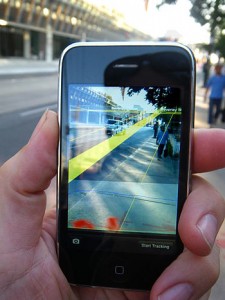Phonegap and AppPharmacy – Just what the doctor ordered!
Health Care is getting swathed in mobility and mHealth. Though the term is not yet adequately defined, mHealth is the new buzzword. mHealth, unlike many other eHealth specialities, has provider/doctor and consumer/patient aspects. This dual nature helps mHealth to be instrumental in improving the quality of care delivery and patient empowerment. mHealth will also play a major role in population health.
With more than 100,000 mobile Apps available for download from Google play and Apple App store, it is difficult for consumers to choose what may be of benefit to them. It is hardly surprising that only a handful of these 100,000 apps is being used in a meaningful way. Very soon, apps may make their foray into a doctor’s prescription. There may even be App-Pharmacists who would create/reconstitute and dispense an app that the doctor ordered. Custom made apps may also be needed for clinical trials in population health such as HOPE-4 of PHRI.
The App-Pharmacists must be able to prototype an app within a short time with a highly ‘agile’ software development cycle. This article is an introduction to ‘phonegap’, which I believe would be the ideal tool for the App-Pharmacists of tomorrow. A basic idea of phonegap would help eHealth professionals to evaluate the opportunities and limitations of this platform!
Healthcare apps could be Web apps, Hybrid Apps or Native Apps. Web apps are just responsive websites that fit the mobile device well, using any of the frameworks such as jQuery mobile. Obviously it is the easiest to build and maintain, but it cannot access mobile specific features such as camera and GPS. If the app is used only to display information (as in ClinicalConnect™) this is the best solution.
Hybrid apps are packaged in a full-screen browser to resemble a native mobile app, with extensions that provide access to some hardware features, but your user interface is still written in HTML/CSS and rendered by a web browser. Phonegap is a popular framework to create hybrid apps. Phonegap was initially called Cordova after a street in Vancouver where the parent company Nitobi was based. Adobe bought phonegap and licensed it under Apache. Though you don’t generally associate open-source with Adobe, phonegap for all practical purposes remains free and (hopefully) will remain so in the future.
So why should you use phonegap?
- It is free.
- Nothing new to learn, You program in HTML, CSS and javascript.
- Compile in the cloud (Free if your project is on github and open-source!)
- Fast prototyping with basic debugging in the browser.
- Fast build cycle, with a single interface for all major platforms.
Where can you get Phonegap?
Get it here: http://phonegap.com/
OR install using npm
sudo apt-get install nodejs nodejs-dev npm sudo npm install -g phonegap phonegap create my-app cd my-app phonegap run android
You may have to revert the ownership of .npm folder back to the user after global install.
chown -R <username> ~/.npm/
Want to see a simple, but working project to learn fast?
Try my Charm!: https://github.com/dermatologist/phonegap-charm
Want to know about Charm?: http://gulfdoctor.net/charm/
Do you want a step by step tutorial on how to start using phonegap. Please comment below!
Not happy with phonegap? Will discuss Titanium soon!

